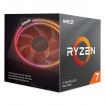Under what circumstances will you get more performance moving from a 6 core to a 4 core with 20% better ST perf per core?
Apart from ST apps, which is a given?
Do you think most games in 2020 are still unable to use more than 4 cores? I mean that's fine if you do think that, but I'm fairly sure it's not true for all games today.
That's your straw man not mine. My point is architecture is irreverent, just consider the performance in the specific tasks you are interested in.


